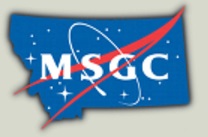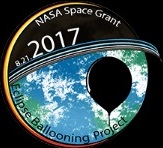BOREALIS Helium Vent Valve
Introduction
We are designing a valve and pump system for high-altitude helium weather balloons to aid with watching the upcoming, August 21st, 2017 total solar eclipse live from the edge of space on a NASA webpage. This project will be used by BOREALIS, a Montana State University research program that provides students with the opportunity to preform experiments, take photos, and record videos at altitudes of 100,000 feet. Our sponsor, Montana Space Grant Consortium (MSGC), has tasked the BOREALIS students and faculty with capturing the eclipse on video and streaming it down in real time to NASA's website. Our system will vent helium from the balloon so that it stops rising once it reaches an altitude of 80-90,000 feet. The wind conditions at this altitude should allow the balloon to hold relatively still while the video camera records the shadow of the moon as it passes over the Earth. After the eclipse, our project will need to pump even more helium out of the balloon to bring everything safely back down to Earth.
Motivation
Weather balloons such as the one we will be using are made of latex. As the balloon rises the atmospheric pressure decreases causing the helium inside to expand. The balloons are designed to stretch until they reach about 100,000 feet, at which point the helium inside causes the balloon to burst. Under normal circumstances, this feature of the latex balloon is not an issue and may even be desirable. However, for the MSGC Eclipse Ballooning Project, it adds a siginificant level of difficulty to the scenario because the balloon rises at 1000 to 1500 feet per minute and takes one to one and a half hours to reach the desired altitude while the eclipse lasts less than 3 minutes. It is our intent to alleviate some of the timing complexity by allowing the balloon to float safely at the desired altitude for as long as it takes to capture the eclipse in its entirety. This feat should allow the BOREALIS team to launch the balloon as early as they desire. The second step, pumping more helium out, should allow for a linear descent rate and the ability to stream video live through the full duration of the flight.
Advisor Information
Prof. Randy M Larimer | College of Engineering
Adjunct Assistant Professor and Deputy Director MSGC
Office: 417 Cobleigh Hall
Tel: (406) 994-6085
Fax: (406) 994-5958
Email: rlarimer@ece.montana.edu
Sponsor Information
Montana Space Grant Consortium (MSGC)
Angela C. Des Jardins
Director, Montana Space Grant Consortium and Montana NASA EPSCoR
Office: 415 Cobleigh Hall
Tel: (406) 994-6172
Email: desjardins@physics.montana.edu


